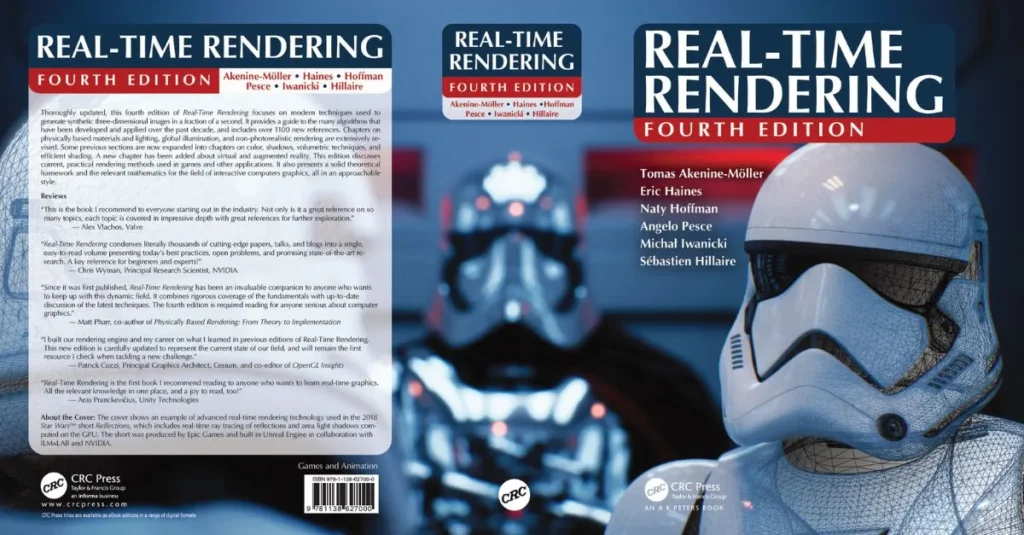Unlocking real time rendering refers to the process of harnessing cutting edge technologies to generate high quality graphics and visual effects instantaneously.
Unlike traditional rendering methods that often require lengthy processing times real time rendering enables swift and interactive creation of images or animations. It powers immersive experiences in fields like gaming, virtual reality, architectural visualization and simulation.
Leveraging powerful hardware and advanced algorithms, real time rendering empowers creators to dynamically manipulate scenes, lighting and textures. In real time offering unparalleled flexibility and immediacy in visual storytelling and content creation.
Understanding cuBVH | A Gateway to Efficiency
A Gateway to Efficiency is an exploration into the concept of cuBVH CUDA accelerated Bounding Volume Hierarchy. It serves as a crucial tool in computer graphics for efficient scene rendering.
This technique leverages the power of CUDA parallel computing to accelerate the construction and traversal of bounding volume hierarchies, essential structures for quickly determining visible objects in a scene.
This introductory guide aims to demystify cuBVH providing clear insights into its functionality and highlighting its significance in optimizing rendering processes. Ultimately leading to enhanced efficiency in various graphics applications.
Unveiling the Core Features of CuBVH
It represents a groundbreaking advancement in the field of computer graphics and real time rendering. This innovative technology is designed to streamline the rendering process by efficiently culling unseen geometry.
By leveraging binary space partitioning techniques CuBVH optimizes the traversal of complex scenes minimizing computational overhead while maximizing visual fidelity. Its core features include rapid culling of occluded objects, adaptive LOD management and dynamic scene updates.
All of which contribute to a more efficient and visually stunning rendering pipeline, facilitating Seamless Collaboration. CuBVH stands at the forefront of cutting edge graphics technologies promising to redefine the standards of real-time rendering in gaming, virtual reality, and beyond.
Facilitating Integration | Documentation and Resources

Facilitating integration often involves providing comprehensive documentation and resources to support users through the process. Here’s some structured approach:
Getting Started Guide
Create a step by step guide that outlines the initial setup process. Include prerequisites, system requirements and any initial configurations necessary to begin integration.
API Documentation
If the integration involves using APIs, provide detailed documentation covering endpoints request and response formats, authentication methods, error handling and sample code snippets in multiple programming languages.
Tutorials and How to Guides
Develop tutorials and how to guides that walk users through common integration scenarios. These could include tasks like setting up webhook notifications, importing/exporting data, or implementing specific features.
Sample Applications
Offer sample applications or projects demonstrating best practices for integration. These can serve as starting points for developers and help them understand how to incorporate your product or service into their own applications.
SDKs and Libraries
Develop software development kits or client libraries in popular programming languages. These simplify integration by providing pre built functions and handling low level details like authentication and request formatting.
Developer Forums and Community Support
Establish a community forum or discussion board where developers can ask questions, share experiences and provide feedback. Having an active community fosters collaboration and allows users to learn from each other.
The Promise of cuBVH | Redefining RealTime Graphics
The Promise of cuBVH lies in its ability to redefine real time graphics by leveraging cutting edge computational techniques. cuBVH, or CUDA accelerated Bounding Volume Hierarchy enhances the efficiency of rendering complex scenes by rapidly organizing geometric data for faster processing.
By harnessing the power of GPUs and CUDA technology cuBVH optimizes rendering pipelines. It enables real time graphics applications to handle increasingly detailed and dynamic environments with ease.
This advancement not only enhances the visual fidelity of virtual worlds but also opens doors for more immersive experiences in fields like gaming, simulation and virtual reality.
What is the Real Time Rendering Technique?
Real time rendering is a process used in computer graphics to generate images or animations instantly, typically at interactive rates. Real time rendering techniques aim to create visuals quickly enough to respond to user input in video games, simulations, virtual reality environments and other interactive applications.
These techniques prioritize speed and efficiency, often employing algorithms optimized for rapid computation and leveraging hardware acceleration from graphics processing units. Real time rendering is crucial for delivering immersive experiences across various digital platforms. It enables dynamic environments, lifelike characters and fluid animations in interactive media.
What are the Three Types of Rendering?

| Rendering Type | Description |
| Rasterization | Converts 3D objects into 2D images through pixelation. |
| Ray Tracing | Simulates the behavior of light to create realistic images. |
| Vector Graphics Rendering | Uses mathematical equations to render images as lines and curves. |
Frequently Asked Questions
What is real time rendering?
Real-time rendering is the process of generating computer graphics in a way that allows for immediate display or playback. It is typically at interactive rates, such as 30 or 60 frames per second.
How does real time rendering differ from traditional rendering?
Traditional rendering often involves pre computing or offline processing to generate images or animations, which can take hours or even days to complete.
What technologies are used in real time rendering?
Real time rendering relies on advanced graphics processing units, rendering engines and algorithms optimized for speed and efficiency.
What are some applications of real time rendering?
Real time rendering is widely used in various industries including gaming, architectural visualization, automotive design, film production and medical imaging.
What are the challenges in unlocking real time rendering?
Achieving high quality real time rendering requires balancing performance with visual fidelity. Developers must optimize rendering pipelines, manage hardware limitations and implement efficient algorithms to maintain smooth frame rates while delivering realistic graphics.
Conclusion
Unlocking real time rendering represents a pivotal advancement in the field of computer graphics. It enables unprecedented levels of interactivity and immersion in virtual environments.
Through the utilization of cutting edge hardware and software technologies real time rendering empowers developers to create visually stunning experiences that were once only achievable through pre rendered methods.
